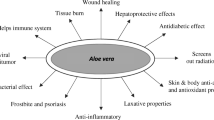Abstract
Several winemaking techniques have been developed to eliminate seeds to prevent the release of high amounts of very astringent proanthocyanidins, especially when the grapes are unripe. However, there is no scientific information on the effects of this practice. The aim of this paper is to study how the elimination and addition of seeds influence the colour, phenolic composition and astringency of red wine. The elimination of around 80% of the seeds led to a significant decrease of colour intensity and anthocyanin concentration. The addition of seeds originated wines with a greater concentration of total anthocyanin, but did not significantly affect the wine colour. These wines also presented significantly higher levels of proanthocyanidins, a greater proportion of epicatechin-3-gallate, a lower mean degree of polymerization, and, in particular, a drastic increase in astringency. Wines obtained with the elimination of seeds, on the other hand, had exactly the opposite characteristics.
Similar content being viewed by others
References
Glories Y (1984) Connais Vigne Vin 18:195–217
Ribéreau-Gayon P, Glories Y, Maujean A, Dubourdieu D (2000) Handbook of Enology. Wiley, Chichester, pp 129–185
Vidal S, Francis L, Guyot S, Marnet N, Kwiatkowski M, Gawel R, Cheynier V, Waters E (2003) J Sci Food Agric 83(6):564–573
Gawel R (1998) Aust J Grape Wine R 4:74–95
Prieur C, Rigaud J, Cheynier V, Moutounet M (1994) Phytochemistry 36:781–784
Geny L, Saucier C, Bracco S, Daviaud F, Glories Y (2003) J Agric Food Chem 51:8051–8054
Souquet JM, Cheynier V, Brossaud F, Moutounet M (1996) Phytochemistry 43:509–512
Moutounet M, Fulcrand H, Sarni-Manchado P, Souquet JM, Atanasova V, Labarbe B, Maury C, Vidal S, Cheynier V (2002) 13eeme Symposium International d’Oenologie. Montpellier, pp 737–747
Vidal S, Francis L, Noble A, Kwiatkowski M, Cheynier V, Waters E (2004) Anal Chim Acta 513:57–65
Canals R, Llaudy MC, Valls J, Canals JM, Zamora F (2005) J Agric Food Chem 53:4019–4025
Gonzalez-Manzano S, Rivas-Gonzalo JC, Santos-Buelga C (2004) Anal Chim Acta 513:283–289
Freitas VAP, Glories Y, Monique A (2000) Am J Enol Vitic 51(4):397–403
Karna L, Sacchi L, Bisson F, Adams D (2005) Am J Enol Vitic 56(3):197–206
Pardo F, Salinas MR, Alonso GL, Navarro G, Huerta MD (1999) Food Chem 67:135–142
Wightman JD, Price SF, Watson BT, Wrolstad RE (1997) Am J Enol Vitic 48:39–48
Couasnon MB (1999) Rev Oenol 92:26–30
Feuillat M (1997) Rev Oenol 82:29–31
Timberlake CF, Bridle P (1976) Vitis 15:37–49
Kovac V, Alonso E, Bourzeix M, Revilla E (1992) Am J Enol Vitic 40:1953–1957
Zamora F (2003) Elaboración y crianza del vino tinto. Aspectos científicos y prácticos. AMV ediciones. Ed. Mundi- Prensa. España
Bertuccioli M, Zini S, Siliani A, Picchi M (2002) Ind Bevande 180:350–356
Leahy R (2000) Vineyard Winery 26:63–69
Kovac V, Alonso E, Revilla E (1995) Am J Enol Vitic 46(3):363–367
Revilla E, Ryan JM, Kovac V, Nemanic J (1998) Food flavours: formation, analysis and packaging influences 583–596
Mateus N, Pinto R, Ruao P, Freitas V (2004) Food Chem 84:195–200
O. I.V. (1990) Le recueil des méthodes internationales d’analyse des vins et des moûts. Ed O.I.V. Paris
Niketic-Aleksic GK, Hrazdrina G (1972) Lebensmittel-Wissenschaft Technol 5(5):163–165
González-SanJosé M, Diez C, Santa María G, Garrido JL (1988) An Quím 84:290–293
Ayala F, Echávarri JF, Negueruela AI (1997) Am J Enol Vitic 48:357–363
Pérez-Magariño S, González-SanJosé ML (2003) Food Chem 81:301–306
Ribéreau-Gayon J, Stonestreet E (1966) Chim Anal 48:188–196
Nagel CW, Glories Y (1991) Am J Enol Vitic 42:364–366
Souquet JM, Mazauric JP, Meudec E, Preys S, Morel-Salmi C, Cheynier V (2004) XXII International conference on polyphenols. Helsinki, Finland. pp 693–694
Kennedy J, Jones GP (2001) J Agric Food Chem 49:1740–1746
Rigaud J, Perez-Ilzarbe X (1991) J Chromatogr 540:401–405
Llaudy MC, Canals R, Canals JM, Rozès N, Arola Ll, Zamora F (2004) J Agric Food Chem 52:742–746
Rivas-Gonzalo JC, Gutierrez Y, Hebrero E, Santos Buelga C (1992) Am J Enol Vitic 43(2):210–214
Santos-Buelga C, Williamson G (2003) Methods in polyphenol análisis. Analysis of anthocyanins. The Royal Society of Chemistry, UK, pp 338–358
Bosso A, Panero L, Guaita M, Marulli C (2001) L’Enologo 87–96
Fulcrand H, Dueñas M, Salas E, Cheynier V (2006) Am J Enol Vitic 57(3):289–297
Souquet JM, Cheynier V, MoutounetM (2000) Bull l’O.I.V. 73:601–609
Acknowledgments
We thank CICYT (AGL 2001-0716 and AGL 2004-02309) and Departament d’Universitats, Recerca i Societat de la Informació de la Generalitat de Catalunya i del Fons Social Europeu for the financial support.
Author information
Authors and Affiliations
Corresponding author
Rights and permissions
About this article
Cite this article
Canals, R., del Carmen Llaudy, M., Canals, J.M. et al. Influence of the elimination and addition of seeds on the colour, phenolic composition and astringency of red wine. Eur Food Res Technol 226, 1183–1190 (2008). https://doi.org/10.1007/s00217-007-0650-8
Received:
Revised:
Accepted:
Published:
Issue Date:
DOI: https://doi.org/10.1007/s00217-007-0650-8




